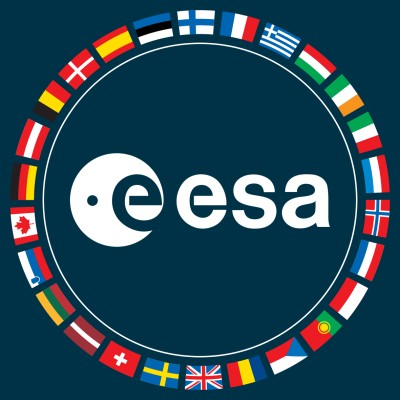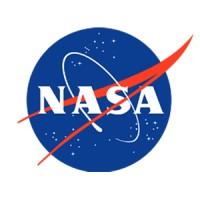The New Frontier: NASA's Europa Clipper and the Global Space Race
October 15, 2024, 10:24 am

Location: France, Ile-de-France, Paris
Employees: 1001-5000
Founded date: 1975
Total raised: $198.67K

Location: United States, Maryland, Greenbelt
Employees: 10001+
Founded date: 1958
Total raised: $25.7B
In the vast expanse of the cosmos, curiosity drives humanity. The latest chapter in this saga is NASA's Europa Clipper mission. Launched on October 14, 2024, from Cape Canaveral, Florida, this probe is on a quest to uncover the secrets of Jupiter's icy moon, Europa. The stakes are high. Scientists believe Europa may harbor an ocean beneath its frozen crust. If true, it could be a cradle for life.
The Europa Clipper is not just another spacecraft. It’s a beacon of hope, a harbinger of discovery. The probe, designed to withstand the harsh environment of space, is equipped with cutting-edge instruments. Cameras, spectrographs, and radar will help scientists analyze Europa's surface and subsurface. The mission aims to answer a fundamental question: Is Europa habitable?
The launch was a spectacle. A SpaceX Falcon Heavy rocket roared to life, propelling the Clipper into the unknown. It will take nearly six years to reach its destination. Upon arrival in April 2030, the probe will embark on a four-year mission, making 49 close flybys of Europa. Each pass will bring it within 25 kilometers of the surface, allowing for unprecedented observations.
Europa has intrigued scientists since its discovery in 1610. The Voyager probes first captured its enigmatic surface in 1979. Subsequent missions, like Galileo in the 1990s, hinted at the presence of a subsurface ocean. Now, the Europa Clipper aims to delve deeper. It will investigate the moon's surface composition, the depth of its ocean, and the salinity of its waters. The goal is to identify the three essential ingredients for life: water, energy, and chemical compounds.
The implications of this mission are profound. If Europa is found to be habitable, it reshapes our understanding of life in the universe. It suggests that Earth is not alone. The universe may be teeming with potential life forms, waiting to be discovered. The Europa Clipper is a step toward answering the age-old question: Are we alone?
Meanwhile, the global space race is heating up. Companies like TelePIX are making waves in the satellite industry. At the 75th International Astronautical Congress (IAC) in Milan, Italy, TelePIX showcased its innovations. This South Korean startup is carving a niche in the competitive space market. Their products, like the TetraPLEX AI-powered processor, promise to revolutionize satellite data processing.
TelePIX's participation in IAC 2024 highlights the growing collaboration between nations and companies in space exploration. With over 5,000 stakeholders attending, the event is a melting pot of ideas and technologies. TelePIX aims to establish itself as a leader in the New Space era, a term that encapsulates the shift toward commercial space ventures.
The company's offerings include high-resolution optical payloads and advanced satellite imagery analysis software. Their innovations are not just about exploration; they address real-world issues. From monitoring blue carbon in marine ecosystems to tracking illegal vessels, TelePIX's technology has practical applications. This blend of exploration and utility is the hallmark of modern space endeavors.
As the Europa Clipper and TelePIX's innovations unfold, they symbolize a new era in space exploration. The quest for knowledge is no longer the sole domain of government agencies. Private companies are stepping into the arena, pushing boundaries and expanding horizons. This collaboration between public and private sectors is essential for future discoveries.
The Europa Clipper mission is a $5.2 billion investment in our future. It represents a decade of hard work by thousands of scientists and engineers. The data collected could change our understanding of life beyond Earth. If Europa proves to be habitable, it opens a Pandora's box of possibilities. The implications stretch far beyond our solar system, hinting at the potential for life in countless other worlds.
The excitement surrounding these missions is palpable. They ignite the imagination and inspire future generations. The universe is vast, and our understanding of it is still in its infancy. Each mission, each discovery, brings us closer to unraveling the mysteries of the cosmos.
In conclusion, the Europa Clipper and TelePIX's advancements are more than just scientific endeavors. They are a testament to human ingenuity and the relentless pursuit of knowledge. As we look to the stars, we must remember that every discovery is a stepping stone. The journey is just as important as the destination. With each launch, we inch closer to understanding our place in the universe. The future is bright, and the possibilities are endless.
The Europa Clipper is not just another spacecraft. It’s a beacon of hope, a harbinger of discovery. The probe, designed to withstand the harsh environment of space, is equipped with cutting-edge instruments. Cameras, spectrographs, and radar will help scientists analyze Europa's surface and subsurface. The mission aims to answer a fundamental question: Is Europa habitable?
The launch was a spectacle. A SpaceX Falcon Heavy rocket roared to life, propelling the Clipper into the unknown. It will take nearly six years to reach its destination. Upon arrival in April 2030, the probe will embark on a four-year mission, making 49 close flybys of Europa. Each pass will bring it within 25 kilometers of the surface, allowing for unprecedented observations.
Europa has intrigued scientists since its discovery in 1610. The Voyager probes first captured its enigmatic surface in 1979. Subsequent missions, like Galileo in the 1990s, hinted at the presence of a subsurface ocean. Now, the Europa Clipper aims to delve deeper. It will investigate the moon's surface composition, the depth of its ocean, and the salinity of its waters. The goal is to identify the three essential ingredients for life: water, energy, and chemical compounds.
The implications of this mission are profound. If Europa is found to be habitable, it reshapes our understanding of life in the universe. It suggests that Earth is not alone. The universe may be teeming with potential life forms, waiting to be discovered. The Europa Clipper is a step toward answering the age-old question: Are we alone?
Meanwhile, the global space race is heating up. Companies like TelePIX are making waves in the satellite industry. At the 75th International Astronautical Congress (IAC) in Milan, Italy, TelePIX showcased its innovations. This South Korean startup is carving a niche in the competitive space market. Their products, like the TetraPLEX AI-powered processor, promise to revolutionize satellite data processing.
TelePIX's participation in IAC 2024 highlights the growing collaboration between nations and companies in space exploration. With over 5,000 stakeholders attending, the event is a melting pot of ideas and technologies. TelePIX aims to establish itself as a leader in the New Space era, a term that encapsulates the shift toward commercial space ventures.
The company's offerings include high-resolution optical payloads and advanced satellite imagery analysis software. Their innovations are not just about exploration; they address real-world issues. From monitoring blue carbon in marine ecosystems to tracking illegal vessels, TelePIX's technology has practical applications. This blend of exploration and utility is the hallmark of modern space endeavors.
As the Europa Clipper and TelePIX's innovations unfold, they symbolize a new era in space exploration. The quest for knowledge is no longer the sole domain of government agencies. Private companies are stepping into the arena, pushing boundaries and expanding horizons. This collaboration between public and private sectors is essential for future discoveries.
The Europa Clipper mission is a $5.2 billion investment in our future. It represents a decade of hard work by thousands of scientists and engineers. The data collected could change our understanding of life beyond Earth. If Europa proves to be habitable, it opens a Pandora's box of possibilities. The implications stretch far beyond our solar system, hinting at the potential for life in countless other worlds.
The excitement surrounding these missions is palpable. They ignite the imagination and inspire future generations. The universe is vast, and our understanding of it is still in its infancy. Each mission, each discovery, brings us closer to unraveling the mysteries of the cosmos.
In conclusion, the Europa Clipper and TelePIX's advancements are more than just scientific endeavors. They are a testament to human ingenuity and the relentless pursuit of knowledge. As we look to the stars, we must remember that every discovery is a stepping stone. The journey is just as important as the destination. With each launch, we inch closer to understanding our place in the universe. The future is bright, and the possibilities are endless.